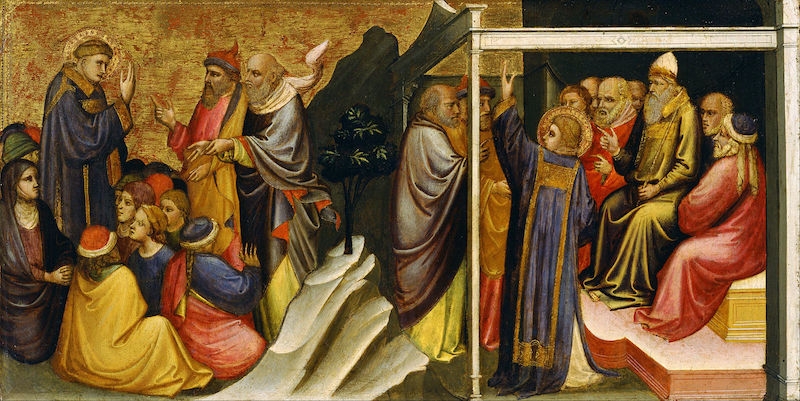Finally, we’ve come to the last Saturday in 2020. It has been a long, anxiety-producing, isolating, and fearful year, one that most of us are glad is ending. We don’t know what 2021 will bring, but we can certainly hope for better things to come.
In addition to being the final Saturday of the year, this is also the day after Christmas. It is typically a laid-back day (except for those who insist on shop for specials on Christmas items for next year, or to exchange the awful sweater Aunt Louise gave). Otherwise, it is to hang out, watch football, let the kids play with their new toys, eat leftovers, and perhaps wonder where the packages are that were supposed to be delivered before Christmas. Christmas Day is over, but the season continues for another eleven days.
The day after Christmas is the feast of St. Stephen. Stephen was an early convert based in Jerusalem following both the ascension and pentecost. Those disciples who headed the early church became swamped with preaching, teaching, healing, traveling, NSD counseling – not to mention caring for widows and the elderly. They realized it was all too much, so they created the office of deacon to delegate some of the hands-on duties to other leaders.
Stephen was one of the early deacons. He not only cared for the poor and elderly, he also preached. His work came to the attention of Saul of Tarsus, and arrested and tried for his faith. He committed what Paul and other Jews thought was heresy by denying Caesar’s divinity, so they stoned him to death. Stephen was the church’s first martyr.
Perhaps the first line of the Christmas carol “Good King Wenceslaus” with its notation of “…on the feast of Stephen” sets the stage for the story of a king who saw an old person gathering wood on the day after Christmas. Wenceslaus, the Duke of Bohemia (b. ca. 911, Duke 921-935), was known as a Christian who religiously followed the teachings of Christ, especially by caring for the poor and elderly. His piety and kindness won the hearts of his people. His brother and his faction assassinated him because of envy, jealousy, and his Christian faith. His legend and hagiography were such that the Holy Roman Emperor, Otto I, gave Wenceslaus the title of King, which is why the 1835 carol refers to him as such.
The cult of Wenceslaus increased following his death, not only in Bohemia but also in England. Perhaps the British Commonwealth countries’ custom of celebrating December 26 as Boxing Day, a national holiday, began with Wenceslaus. On that day, masters of the households typically gave their servants a day off from work. along with food and clothing as thanks for service, especially during Christmast. The custom of offering boxes has somewhat died out. However, many still thank milkmen, postal workers, newspaper deliverers, and the like with small gifts of money on Boxing Day. The legacy of both Stephen and Wenceslaus carries on.
Our custom of giving gifts at Christmas brings into question the rest of the year? Stephen and Wenceslaus gave not only during the winter holidays. Hunger, poverty, and homelessness are year-round problems. Jesus taught us to care for those less fortunate whenever and wherever it is needed.
As we go walk the Christmas season and look forward to Epiphany, let us remember to give to others. It doesn’t necessarily have to be money or tangible goods; it can be a simple welcoming smile or hug, listening, helping with rides to doctor’s appointments, or meeting whatever need might present itself. Open a door, giving a hand to steady someone on a curb or step, or maybe pay for a cup of coffee for the person behind you. The chain you start continue to reach untold others.
Happy St. Stephen’s Day and a continued blessed Christmas season. Even if the snow isn’t deep or even if the leaves on the trees are just now falling, be kind to one another, today and every day.
God bless.
P.S. Love your neighbor – wear your mask!
Image: St Stephen Preaching/St. Stephen before the High Priest and Elders of the Sanhedrin (1408). Artist: Mariotto di Nardo (1394-1424). From the National Museum of Western Art (Japan). Found at Wikimedia Commons.
Linda Ryan is a co-mentor for an Education for Ministry group, an avid reader, lover of Baroque and Renaissance music, and retired. She keeps the blog Jericho’s Daughter. She lives with her three cats, who provide entertainment and aesthetics, even when asleep.

